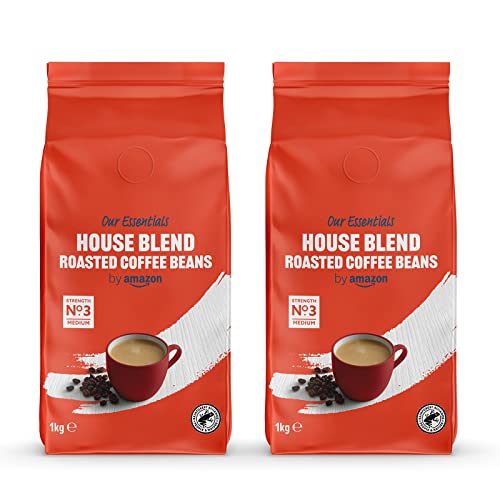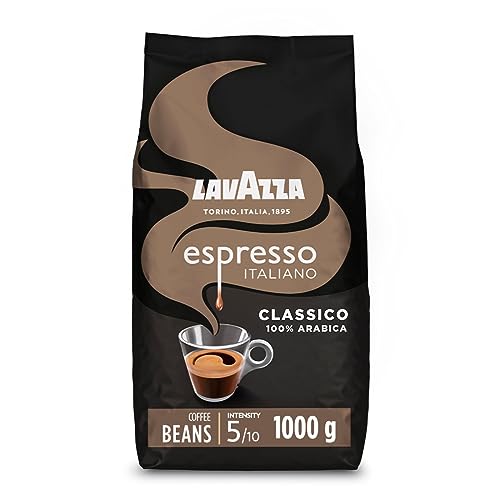9 Lessons Your Parents Teach You About 1 Kg Coffee Beans
2024.07.30 08:36
 Why Buy Whole Coffee Beans in 1kg Bags?
Why Buy Whole Coffee Beans in 1kg Bags?A kilogram of coffee beans can make around 142 single-serve cups. This assumes that there is no spillage or waste.
A tablespoon of beans in their whole form contains around seven grams. When they are ground, a cup may contain more or less. This is due to differences in the size and density.
Cost
Coffee beans are becoming increasingly important as more coffee drinkers realize the benefits of brewing a great cup of coffee at home. Purchasing whole, fresh high-quality coffee beans in bags weighing 1kg is a wise choice for your taste buds and your wallet. 1kg of beans will yield between 55 and 100 cups, depending on the strength of your coffee.
The cost of a kilogram of coffee beans depends on many factors, including processing and transport costs. These costs, which might appear small at first but can quickly become costly and can have a significant impact on the price of coffee beans. The price of a kilogram of coffee beans can also increase in the event that the roasting process is interrupted or if the bean quality isn't satisfactory.
In addition to these costs, coffee producers should take into account other indirect expenses when planning their budgets for harvests. These expenses include export taxes, the contribucion-cafetera tax charged by FNC, and port fees. Some importers charge additional administration and management costs, which can be shockingly high.
The price of roasted coffee is a different factor that can influence the price of a kilogram of coffee beans. Retail prices for coffee beans are dependent on the price of green coffee and can be very different. The price of green coffee is dependent on the region and country in which it is produced.
When determining the cost of a kilogram of coffee beans, it is important to also take into account any coffee waste that occurs during roasting or processing. Coffee waste from grinder plates, for example can lower the weight. This makes the final calculation of how many servings per 1 Kg Coffee Beans of coffee beans can produce more precise.
The roasting method is also important in determining the amount of cups of coffee that one kilogram of beans can yield. A light roast produces a sweet and delicate flavor and a darker roast has a more intense and fruity taste. The amount of coffee produced by a kilo of coffee beans will also be contingent on the the method of brewing like filter or espresso.
Environment
The environment affects the production of coffee beans and a number of environmental concerns are associated with the beverage. Deforestation, water pollution, and soil erosion are just a few of the environmental problems. Some of the largest coffee beans 1kg arabica companies have taken steps to limit their impact on the environment however, there is still a lot to be done. This includes encouraging sustainable farming practices and offering financial support to initiatives to protect the environment.
Several papers have investigated the impact of climate changes on the production of coffee. They have found that the climate has a significant impact on the quality and yield of coffee beans. However, the impact of the changing climate on coffee production is contingent on the nature of the farm and farming methods employed. The beans produced by farmers in shade have a greater aroma, acidity and typicity when compared to beans grown in sun. In addition the beans produced by farmers who employ agroforestry techniques tend to have greater aroma, taste and acidity than the beans grown in monocultures.
Another major issue is the excessive use of chemicals in the coffee industry. These chemicals are not only dangerous to humans, but they also pollute water. This is especially true for non-organic coffee, which uses a lot of synthetic pesticides and fertilizers. The chemicals that are used up leach into the water and disrupt ecosystems, which could affect wildlife and humans.
In addition to these worries The high price of coffee production can make it prohibitive for some families. A lack of consistent rain can also have a negative impact on the harvest. The conditions for coffee's growth are very specific and a lack of rain could result in a lower yield.
In addition to these issues climate change is also expected to significantly impact the ability of land to be used for coffee production. According to research, a significant decline in the amount of suitable land and a rise in unsuitable areas will be observed in the majority of the major coffee-producing countries. This will cause conflicts between coffee production and nature conservation. This will also decrease the amount of ecosystem services that are provided by areas of coffee production including controlling or supporting services.
Experimentation
Coffee beans can be used in a variety of different ways. They are known for their bitterness, but can be controlled with the right combination of ingredients. They can be brewed to create coffee, or used as a baking ingredient. They can also be added into desserts to add texture and flavour. Coffee beans are a fantastic source of antioxidants that can be utilized in many recipes.
The taste of coffee is affected by the climate, soil quality, and elevation in the region in which it is grown. In addition, the processing techniques employed to prepare the beans can alter its flavour. For example, honey processed coffees tend to have a sweeter, fruitier taste than conventionally-processed coffees. These kinds of coffees are gaining popularity with consumers. In addition, they typically are less expensive than traditional coffees. However, they are more difficult to grow and require more ability from the farmer.
Apart from caffeine, coffee also contains significant amounts of phenolic compounds that act as powerful antioxidants. One of the most important phenolic compounds are chlorogenic acids. These are produced by esterifying quinic acid, as well as one or more trans-cinnamic acids. It has been proven that coffee has the ability to prevent and inhibit oxidative damages, and also reduce the production of inflammatory mediators.
Infusion is a very popular method to prepare coffee and there are many varieties of flavors to try. These can range from traditional, like chocolate or cinnamon to more exotic flavours like orange, lemon, and ginger. Some of these flavors come from the beans, while others are added during roasting.
Another way to experiment with the taste of coffee 1kg is to brew it with different methods. For instance, you can use a coarser grind to make a stronger brew, or try making a stronger brew using a higher water temperature. These experiments can help you discover the brewing style that you prefer.
Another interesting way to experiment with coffee is to sprinkle the grounds on the soil of a potted plant to examine how it affects the growth. Similar experiments have been conducted and most of the time the plants that were given ground coffee had a faster growth rate than those that did not.
Taste
The flavor of coffee is a matter of personal preference. To find the most delicious taste, try different grinds, brewing techniques and even mixing of beans. When you buy by the kilo, you can have more flexibility to experiment, which could create a more pleasant experience for your senses. It's also more cost-effective in the long term, because buying by the kilo helps reduce packaging waste. Coffee grounds, which are a product of your daily brew can also be composted therefore buying in bulk is green.
If you're new to espresso, it's likely you will need to go through several 250g bags to get your extraction down. This isn't an uncommon occurrence and is an important aspect of learning curve. Beans can be purchased by the kilo to get you through the first stage and perhaps aid you in learning other methods of brewing once you've mastered it.
You'll save money if you buy one kilo rather than smaller bags, because shipping and packaging costs are less. By buying by the kilo, you also reduces your carbon footprint, since it requires fewer bags and less sealing valves and degassing valves than purchasing just two or three 250g bags at each time. The fewer bags used will also contribute to less garbage in landfills.
Another benefit of buying kilo quantities is that it permits you to experiment with various roasts and flavours, which can be a rewarding experience for coffee enthusiasts. Additionally, it is easy to locate a roaster and a supplier who offer discounts on larger purchases. Furthermore, you can shop online and have your freshly roasted beans delivered right to your doorstep, which is convenient for busy people.
 You can also select an espresso package that includes a tamper pad, which will help you achieve the consistency and precision you require to create a perfect espresso shot. The tamper is made from sturdy materials and high-quality products. It has a non-slip surface that reduces noise while ensuring that you apply the right amount of pressure to the beans.
You can also select an espresso package that includes a tamper pad, which will help you achieve the consistency and precision you require to create a perfect espresso shot. The tamper is made from sturdy materials and high-quality products. It has a non-slip surface that reduces noise while ensuring that you apply the right amount of pressure to the beans.